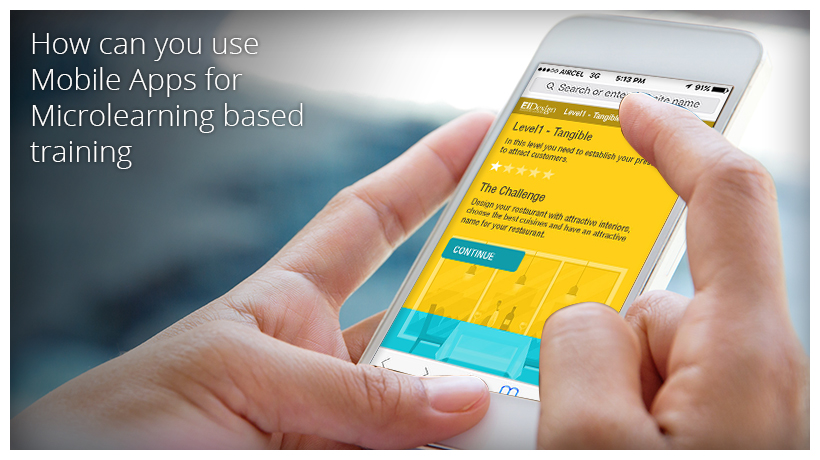
Do your corporate learners need some added incentive to actively engage in online training? In this article, I’ll explore 9 easy steps to gamify your online training courses.
How To Create Gamified Online Training Courses
Gamification adds excitement to the online training process. Corporate learners know that they’ll be rewarded for their efforts in the form of badges, points, and other intangible incentives. This can be a game changer, pun intended, for corporate learners who lack the motivation and drive to pursue the online training goals. Here is a 9-step guide to create gamified online training, even if you’re working on a limited corporate eLearning budget.
1. Define Your Learning Objectives And Desired Outcomes
It all begins with specific learning objectives, goals, and desired outcomes. Which behaviors are you trying to promote? What do your corporate learners need to know by the end of the online training course? Which skills do they require in order to solve everyday challenges? This will be the foundation of your gamification strategy. Every element must align with the overall learning objectives and outcomes, if you want to give your corporate learners real value. The goals come first and the game mechanics, story, and media act as reinforcements.
2. Research Your Audience
Conduct surveys, polls, pre-assessments, and interviews to research your corporate learners. This gives you a good indication of their personal interests, preferences, and expectations. You also learn more about their primary sources of motivation, which allows you to create customized gamification elements that inspire and engage your audience. In addition, in-depth research gives you the power to target your online training content. For example, skip rudimentary subjects they already know and include more advanced ideas and concepts, thus enhancing the benefit of your gamified online training.
3. Choose The Right Reward System
Corporate learners participate in your online training course because they want to solve a problem, develop skills, or master a task. But they are also there to earn rewards, even if those rewards are badges, certificates, and other non-monetary incentives. As such, you need to use the research data from step 2 to choose the best reward system. Ultimately, the rewards should cater to their personality traits and drives. For example, printable certificates are the ideal choice for corporate learners who like to display their achievements in a more tangible form.
4. Pick The Ideal Game Mechanics
How are corporate learners going to interact with gamified online training? How are you going to impart a sense of accomplishment and motivate them to succeed? This all boils down to the game mechanics you incorporate into your online training course design. Unlockable objects, levels, badges, and leaderboards are just a few of the game elements to consider. Be sure to include your corporate learners in the decision-making process, as they’ll be able to tell you which gamification elements suit their needs.
5. Find A Suitable eLearning Authoring Tool
Once you have a gamification strategy in place and research data on hand, it’s time to choose the best eLearning authoring tool for the job. Ideally, you should look for software that features built-in gamification templates, themes, and assets. For example, layouts that you can use to create a level-based gamified online training course or media that you can transform into badges and other aesthetic rewards. You’ll also need a Learning Management System to deliver, deploy, and track your gamified online training course.
6. Design An eLearning Storyboard
eLearning storyboards keep the corporate eLearning project on track and ensure that every component supports the learning objectives. Create a visual layout for each page, including placeholders for elements that are still being developed. Don’t forget to include a spot for the introduction, summary, and instructions. You should also highlight the game mechanics, rewards, and key takeaways so that every team member is on the same page. For example, the graphic designer can start gathering the images and layouts they need to create each level.
7. Develop Clear Criteria And Online Instructions
Corporate learners need to know how they earn rewards and what they must do to successfully complete the online training course. For example, they earn points whenever they pass an exam or achieve the desired outcome in a task-based simulation. This gives them the ability to focus on a specific goal and focus their efforts instead of wondering how they can earn the required number of badges or that coveted compliance online training certificate. Thus, they refuel their motivation and continually improve their performance.
8. Schedule A Test Session
Before you officially launch your gamified online training course, it’s wise to carry out a test round to remedy unforeseen issues. For example, the badges are not as visually striking as you hoped or the transition between levels feels disjointed or chaotic. Invite a group of corporate learners to try out the gamified online training course and offer their input. You can also follow up with a focus group to discuss areas for improvement. Now is the time to get rid of glitches, as well as omit any elements that may be distracting or irrelevant for your corporate learners.
9. Promote And Perfect Your Gamified Online Training Course
Corporate learners may not be aware of the benefits of your online training course, or they need some encouragement to login to the LMS and participate. The key is to emphasize the real-world value of the online training course and how that pertains to their personal lives. For example, it will help them improve task proficiency or overcome a common obstacle. You should also gather feedback from corporate learners on an ongoing basis. For instance, conduct surveys and questionnaires after the first week to gauge their interest. LMS metrics can also shed light on the strengths and weaknesses of your gamified online training course design.
These 9 simple steps can help you create a winning gamification strategy for your corporate learners. Just remember that periodic evaluations are essential, as they allow you to continually improve your online training course design and incorporate more effective game mechanics.
Did you know that gamifying your online training course can even help you obtain valuable feedback? Read the article 8 Tips To Use Compliance Online Training Gamification To Collect Feedback to discover how to use gamification in compliance online training to identify areas for improvement.



